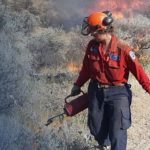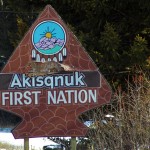Home »

Ecosystems and species-at-risk habitat enhanced
 Columbia Basin Trust supports four large-scale projects to improve ecological health, native biodiversity
Columbia Basin Trust supports four large-scale projects to improve ecological health, native biodiversity
Endangered whitebark pine, pathways for pollinators, wetlands and habitats for swallows and bats will all benefit from new environmental restoration initiatives as part of Columbia Basin Trust’s Ecosystem Enhancement Program.

“The environment of the Basin is part of what makes this area so special, and these projects build on the direction from people in the region that ecosystem enhancement is important—and a strategic priority of the Trust,” said Johnny Strilaeff, Columbia Basin Trust President and Chief Executive Officer. “We are committed to supporting large-scale initiatives like these that will have a measurable impact on Basin ecosystems, and are guided by partnerships, local knowledge and data.”
These four new projects will receive $1.9 million as part of the Trust’s Ecosystem Enhancement Program—a five-year initiative started in 2017 to maintain and improve ecological health and native biodiversity in the region through large-scale, on-the-ground projects.
Projects previously announced are restoring ecosystems in the Elk Valley, Lower Columbia, Kootenay Lake area, the southern Rocky Mountain Trench, Slocan and the Columbia Valley sub-regions. The final intake of the program this year will support additional projects throughout the Basin.
Banking on Swallows in the Upper Columbia – $432,000
Bank and barn swallows are an at-risk species facing a sharp population declines. The Upper Columbia Swallow Habitat Enhancement Project is a five‐year project led by Wildsight Golden that will conserve and enhance eight hectares of breeding and nesting habitat of both species at various locations in the area. The initiative will also track migratory routes and wintering ground locations to better understand the opportunity for collaboration with other regional and international partners to support habitat connectivity and protection for both species.
“The Upper Columbia Swallow Habitat Enhancement Project is offering citizen science opportunities in terms of monitoring swallow nest sites in the Columbia Valley,” said Rachel Darvill, Program Biologist on Upper Columbia Swallow Habitat Enhancement Project with Wildsight Golden. “Through this type of intimate involvement I think that this project has already, and will continue to, build upon the knowledge of swallow identification but also grow people’s understanding of nature.”

Increasing Bat Populations Through Wetland Restoration – $207,000
Bats are bioindicators, and an important species for monitoring water quality and overall health of forest and wetland ecosystems. Their numbers can also measure ecosystems restoration and improvement. This five-year project will restore natural bat roosting habitat within a five-hectare area to build resiliency in local populations.
Enhancement work will be integrated into wetland restoration projects in the North and Upper Columbia sub-regions; areas being evaluated include Meadow Creek, Duncan, Beaton and Parson.
The initiative will be led by Wildlife Conservation Society Canada and supported by regional partners.
“In many parts of the Columbia Basin, standing water provides excellent foraging and drinking habitat for an estimated 12 species of bats. Many species depend on low elevation mature or old growth trees to raise a pup in each summer and this roosting habitat is limiting,” said Dr. Cori Lausen, Conservation Research Biologist with Wildlife Conservation Society Canada.
“Over the next five years we will work with multiple partners to install and monitor structures that will enhance roosting habitat for bats in strategic areas of the North and Upper Columbia sub-regions.”
Giving Whitebark Pine a Growing Chance – $611,000

Whitebark pine is an endangered high-elevation species that moderates snowmelt and stabilizes soil. Further, its seeds provide an important food source for red squirrels, grizzly bears, and the Clark’s nutcracker. White pine blister rust (an introduced fungus), mountain pine beetle, wildfire risks, and a changing climate are all threatening these keystone tree species.
This project, led by the Whitebark Pine Ecosystem Foundation of Canada, will restore and enhance 300 hectares of habitat in the North and Upper Columbia sub-regions of the Basin. The project will increase the number of trees with resistance to white pine blister rust and minimize losses of trees and genetic diversity to mountain pine beetle.
“Whitebark pine recovery requires active management to withstand environmental threats. Given its vast range and preferred habitat on mountain tops, this is a monumental task. This five-year project is the largest and most ambitious recovery project to-date outside of the National Parks,” said Randy Moody, President of the Whitebark Pine Ecosystem Foundation of Canada.
“We will restore 300 hectares, plant 100,000 seedlings, and collaborate with many others in advancing the recovery of this critical species.”
Pollination Pathways to Support Critical Ecosystems – $650,000

Many native bees and all moths and butterflies need native plants to complete their life cycles. Most plants need native pollinators to produce seed and fruit. The Pollination Pathway Climate Adaptation Initiative will enhance plant-pollinator networks within the diverse native plant communities in the Lower Columbia sub-region.
The five-year project will increase abundance and connectivity of native wildflowers through seed collection, growing and plantings. It will also enhance habitat for native insect pollinators through the preservation of nest sites and the provision of host plants for specialist bees, butterflies and moths.
This project will enhance over 250 hectares of riparian camas meadow ecosystems and over 400 hectares of upland showy milkweed meadow ecosystems at seven sites.
“The pollination of flowering plants by animals is a critical ecosystem service. The decline of pollinators has many causes, including the decline of our natural areas and thriving native plant populations,” said Valerie Huff, Restoration Botanist with the Kootenay Native Plant Society.
“Camas and milkweed are anchor plants for pollinators in the region’s ecosystem, but there are many other plants included in the Pollination Pathway initiative that will support many species of endangered and at-risk pollinators.”
Columbia Basin Trust supports the ideas and efforts of the people in the Columbia Basin. To learn more about the Trust’s programs and initiatives, and how it helps deliver social, economic and environmental benefits to the Basin, visit ourtrust.org or call 1-800-505-8998.
Columbia Basin Trust operates in the unceded traditional territories of the Ktunaxa, Lheidli T’enneh, Secwepemc, Sinixt and Syilx Nations.
Lead image: Bank and Barn Swallow habitats will be enhanced by Wildsight Golden in the Upper Columbia sub-region with support from the Trust. Columbia Basin Trust photos
Columbia Basin Trust







